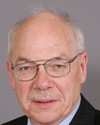Mr. Chair, when we look at the program parameters—and they are still very much under development for the Canadian experience class—our thinking is that those temporary foreign workers in the skilled trades, the technical occupations...that is a very significant gap the labour market is missing out on now. We would like to ensure that those individuals have the opportunity to apply to remain permanently in Canada, after having worked for a specific period of time. We know that only about 8% of the skilled workers coming in through the overseas grid are in the skilled trades, and those are the key occupations that the economy needs now.
With regard to low-skilled workers, a fair proportion of the low-skilled workers are eligible, through the LCP program, to apply for permanent residence. There's another significant group, the seasonal agricultural workers, who come for about eight months every year, who are part of that low-skilled group, who would not be eligible to remain permanently at this time. The remainder of those low-skilled individuals are very much coming in at the request of specific employers in specific sectors in specific regions.
I use the example of long-haul truck drivers, which is an occupation that most provinces are experiencing a shortage of, and many of whom are using their provincial nominee programs to allow those people to remain in Canada as permanent residents. So there is an avenue there, as well as the arranged employment scheme, which would allow individual employers to nominate individuals to meet their particular labour market needs.
With regard to our forecasts as to who would be applying under such a new class, we have looked at the historical data of those temporary foreign workers and international students who are in Canada and who have been in Canada for two years. If we implement this category in 2008, that means people who have been here for at least one year, if not two, would be eligible to apply. So it's a retrospective assessment of the number of workers here at the higher skill levels.
We have purposefully taken Americans out of that group because we have found, historically, that temporary foreign workers from the United States do not stay. They are here for a number of days, a number of months, but they tend to go home. So looking at the remainder of the population, as well as taking out working holiday participants, international youth students who are here and who have open work permits, we have based our assessments on the remainder of that pool, which would lead us to about 25,000. We've also factored in a potential draw factor for implementing this program as well as anticipated growth in the temporary foreign worker program.






